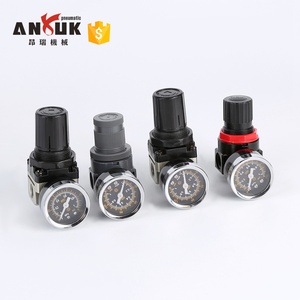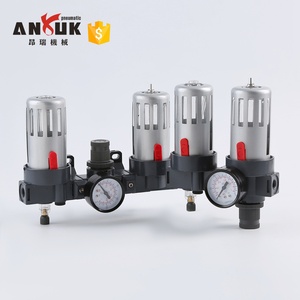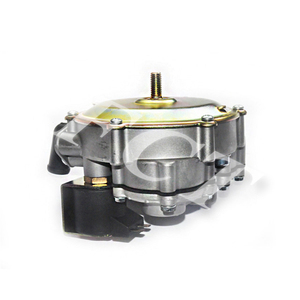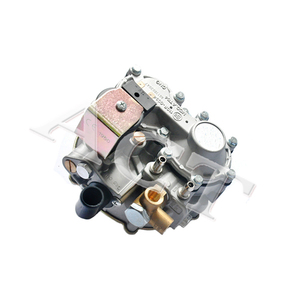
All categories
Featured selections
Trade Assurance
Buyer Central
Help Center
Get the app
Become a supplier

(1119 products available)






































There are various types of methane test kit based on several factors, including functionality, the volume of gas transportation, and application. Below is a list of the most common ones.
This type of regulator is primarily used when there is a need for delicate control over the gas flow. Agricultural biogas digesters and methane gas detectors for homes use low-pressure regulators to ensure that the gas is delivered at a safe and manageable pressure.
As the name suggests, high-pressure regulators are used to control the flow of gases coming from storage cylinders or bulk containers. Methane sources like pipelines and gas grids require this type of regulator to ensure the gas is transported at optimal pressure levels.
They are designed to provide more stable output pressure compared to single-stage regulators. These generators first reduce the pressure in one stage and then in a second stage, which helps in minimizing pressure fluctuations. They are ideal for environments where consistent pressure is critical, such as industrial methane extraction facilities.
They are equipped with advanced technology that allows for pressure regulation without human intervention. These regulators are often deployed in large-scale operations with automated gas monitoring systems, such as pipeline networks, where real-time adjustments are necessary for maintaining safety and efficiency.
These regulators are designed to handle multiple pressure levels simultaneously, making them suitable for complex gas distribution systems. Due to their versatile SMS methane detector multi-functionality, coaxial regulators find applications in chemical plants and multi-point gas distribution systems.
The construction materials and the durability of methane regulators are key factors influencing their reliability and longevity, especially in demanding industrial settings.
It is a preferred choice due to its excellent resistance to corrosion, especially in environments where the regulators might face moisture or other corrosive substances. Methane emissions detection technologies that operate at high temperatures benefit from stainless steel construction, as it can withstand elevated heat without degrading. Apart from this, its strength allows it to endure high pressures, making it ideal for both low- and high-pressure regulators.
Brass is commonly used in low-pressure methane regulators because of its good balance between strength and ease of machining. While not as corrosion-resistant as stainless steel, brass regulators are suitable for indoor environments where humidity is not a significant factor. Many residential biogas systems utilize brass regulators due to their cost-effectiveness and adequate durability.
In agriculture, where biogas is used for heating or fuel, brass regulators are commonly found.
These regulators are less common but are used in specific applications where lightweight materials are needed. Though not as durable as stainless steel or brass, aluminum regulators can be found in temporary installations or in areas where their lightweight construction offers advantages.
These materials are generally used in aluminum methane gas detectors to create a corrosion-resistant barrier. While plastic composites may not offer the same level of durability under extreme conditions, they are suitable for environments where chemical exposure is a concern.
Methane regulators are widely used in various industries to ensure safe and efficient operation.
This industry widely uses the regulators to maintain the pressure of extracted methane or natural gas. In this situation, they help to keep the gas at safe levels during transportation through pipelines to prevent explosions or leaks. In the gas processing plants, regulators help to convert raw gas into usable fuels by keeping the gas pressure stable during the chemical reactions.
Biogas is created from waste in landfills, sewage treatment plants, and organic material decomposition. This gas is purified with the help of regulators to separate impurities from biogas before using it as a fuel. Regulators are used in agriculture to manage pressure in digesters that produce biogas from manure and crop waste.
In manufacturing, methane is frequently used as fuel for high-heat processes like glass and metal production. For instance, in chemical manufacturing, regulators control the methane used to produce chemicals and synthetic materials like plastics. In this case, high- and low-pressure regulators are used to maintain the right pressure for these chemical reactions.
In heating, ventilating, and air-conditioning systems (HVAC), regulators help to ensure the safe and efficient operation of gas heating systems. They do this by maintaining the right gas pressure for furnaces and boilers. They are also used in gas appliances like stoves and water heaters, which are found in many homes and businesses across the globe.
There is often methane, which is also known as firedamp in underground coal mines. Coal mining regulators are used in these mines to safely extract the methane gas by regulating its pressure during the extraction process. They are also used to monitor and manage methane levels in mines to prevent explosions. Additionally, they help with the extraction of methane deposits through mining techniques like hydraulic fracturing.
To choose the right one, people should consider various factors, including the gas source, desired pressure range, temperature tolerance, and material compatibility. Below are some guidelines on how to choose the right one.
High-pressure regulators are suitable for natural gas pipeline systems since they have to withstand high-pressure levels. Low-pressure types are more appropriate for applications like biogas digesters, where the gas is produced through organic materials.
In cases where the operating temperature is extremely high or low, choose a stainless steel or brass regulator that can withstand such conditions. Getting a standard pressure gauge that can also withstand these conditions will help, as extreme heat or cold can damage the gauge.
Determine the pressure range for the specific application. The regulator should be able to handle the required pressure range without exceeding its rated capacity. On the one hand, low-pressure regulators are sufficient for small-scale operations like residential biogas systems. Inversely, high-pressure regulators are required for large-scale operations such as natural gas extraction and chemical manufacturing.
For long-term outdoor exposure or high-corrosive environments, go for a regulator made of corrosion-resistant material like brass or stainless steel. On the other hand, plastic composites are ideal for environments with high chemical exposure.
Ensure the regulator meets relevant industry standards and certifications. These standards can vary by country or region but are critical for ensuring the regulator's safety and performance. For example, in the U.S. gas regulators must meet standards set by organizations like the American National Standards Institute (ANSI).
A1. They maintain steady gas pressure, ensure safety during gas transport, withstand harsh conditions, and are compatible with various environments.
A2. The most common ones are neglecting to regularly check for gas leaks, using the wrong type of regulator for the job, and failing to properly maintain the equipment.
A3. Yes, there are still some ongoing innovations in methane regulators. These include developing smart regulators with IoT capabilities for real-time monitoring and integrating advanced materials to improve durability.
A4. They do not need regular maintenance because they are generally designed to be low-maintenance. Nevertheless, they can have a longer lifespan when frequently inspected for wear and tear, cleaned, and checked for gas leaks.